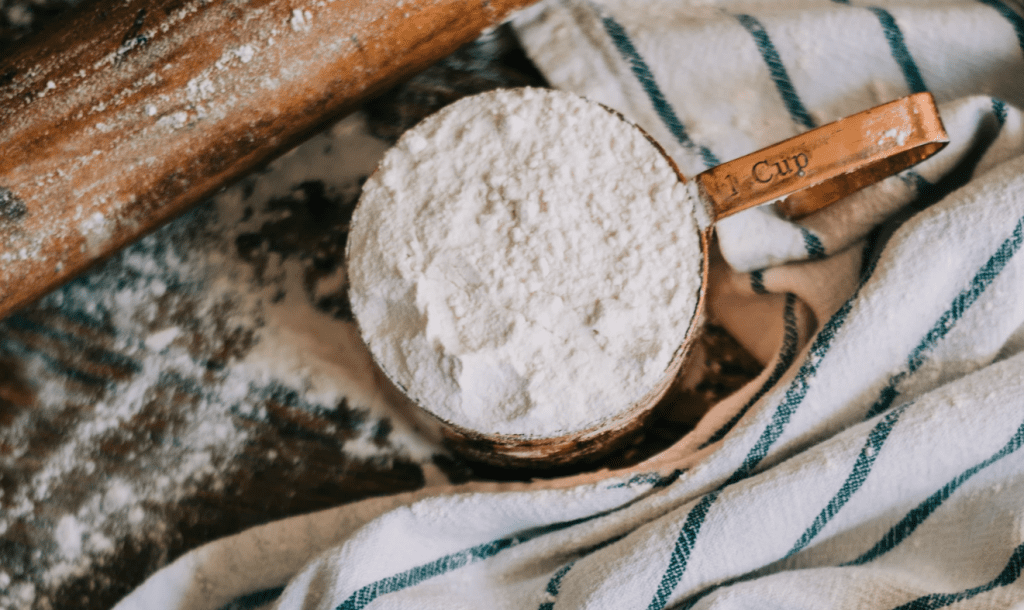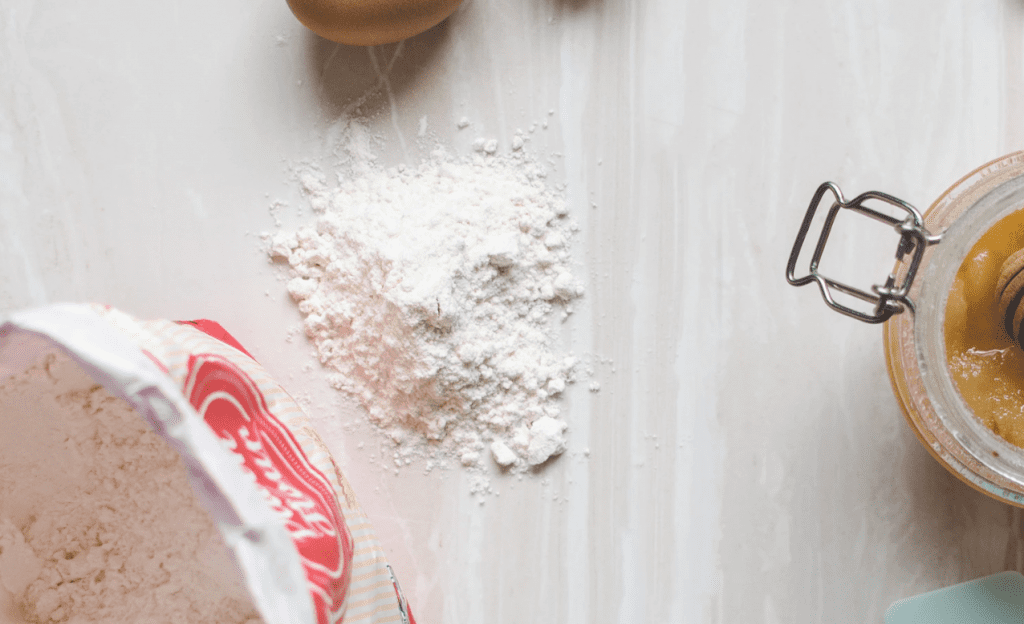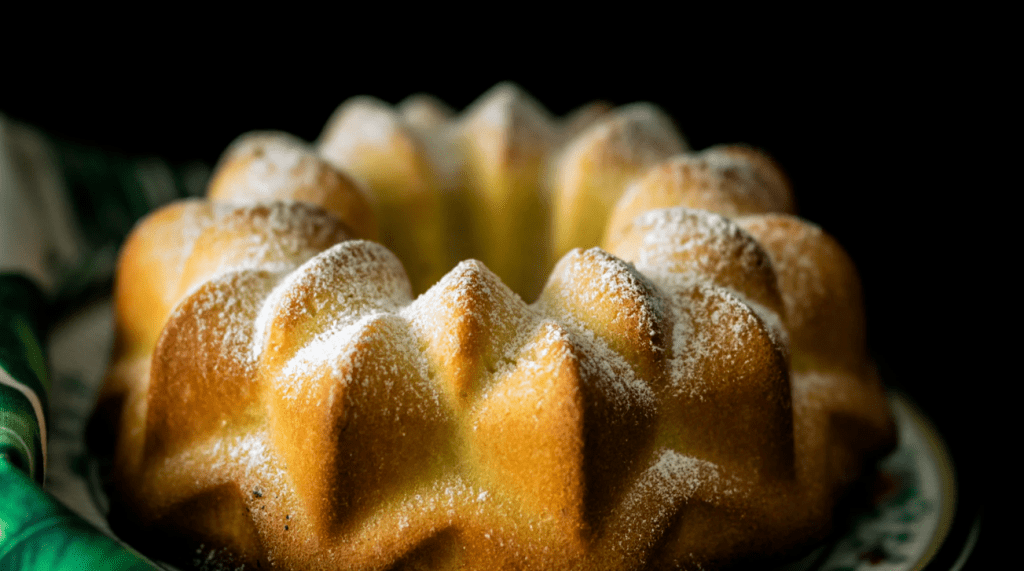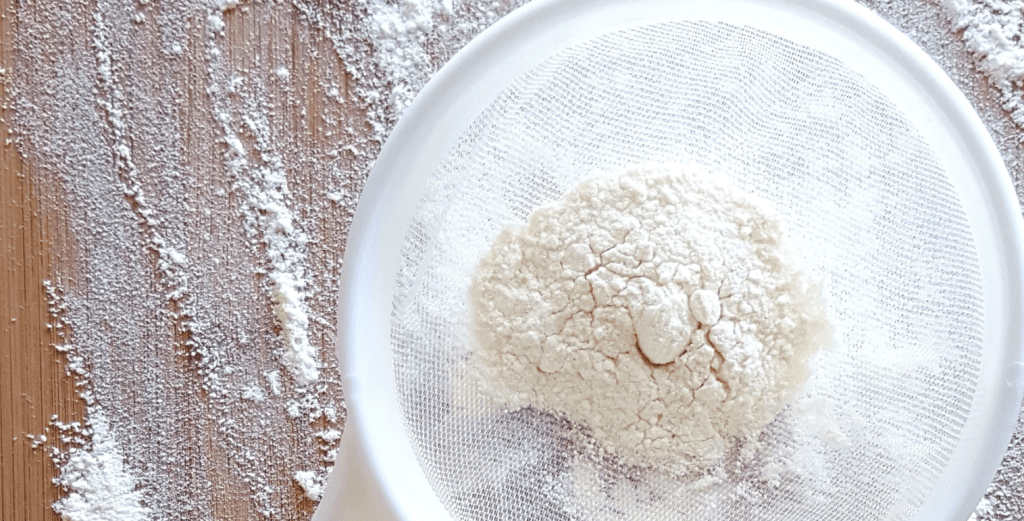
You’re in the mood for cake! You get a recipe and discover it calls for cake flour, and you’re out. Whatever. Flour is flour, you think, and cake flour vs. all-purpose flour doesn’t matter. So, you skip the grocery run and make your cake with regular all-purpose flour.
Only, the cake isn’t quite what you expected. It’s dense and chewy, not light and fluffy like the one at the bakery. It’s not bad. It’s just…different.
Cake flour vs. all-purpose flour is not a knock down drag out culinary battle (unlike, say, does ketchup belong on a hot dog or not).
You can, as the name implies, use all-purpose flour in everything. However, cake flour and all-purpose flour are not the same things. There are subtle differences that can affect the taste and texture of all of your baked goods.
Flour Is Just Wheat

Most novice bakers think that flour is just ground up wheat, so no matter what it says on the box or bag, flour is just flour.
Some bakers may believe that the distinction between cake flour vs. all-purpose flour is just a scam. That calling flour “cake flour” is just a way to charge people more money (like when you slap “baby” or “wedding” on something).
However, this could not be further from the truth. While most flour is ground up wheat (soy flour and other substitutes notwithstanding), there is a distinct difference between cake flour vs. all-purpose flour.
There’s more than one kind of wheat

Yes, flour is made of wheat. Specifically, flour is wheat grain that is ground up into a fine powder. While there are many kinds of flours out there (whole wheat, unbleached, etc.), when it comes to cake flour vs. all-purpose flour, both are bleached white flour.
However, bleached white flour is not one kind of wheat. In fact, most bleached white flour consists of two types of wheat: hard wheat and soft wheat.
The main difference between hard wheat and soft wheat is the amount of protein in the flour. Wheat protein affects how much gluten ends up in your culinary creations. The more protein you start with, the more gluten you’ll end up with.
Hard wheat is high in protein, which means your baked goods will contain more gluten. On the other hand, soft wheat contains less protein and, therefore, less gluten. Soft wheat also has more starch, which impacts how much liquid your batter or dough absorbs.
So, what’s the big deal about gluten?
Holding it together

Unless you have to avoid gluten, you probably don’t worry about how much gluten is in your flour. However, gluten plays an essential role in shaping your baked goods and impacts what your baked goods look and taste like.
Gluten is the “glue” that holds your baked goods together. While all wheat flours have gluten in them from the wheat proteins, gluten itself is not a part of the wheat grain or the flour. Gluten only forms when you manipulate the flour.
Adding water (or another liquid) to the flour starts the chemical reaction that forms gluten strands. Mixing the flour and liquids helps create and strengthen the strands. The more you mix the dough, the longer, stronger, and tougher the gluten strands become.
That’s why, for example, you knead bread doughs for a long time. The more you knead the mixture, the stronger the gluten strands become. Those strong bonds are what allow your doughs to rise, and, more importantly, hold their shape.
The stronger the gluten, the stronger the baked good.
All-purpose for most purposes

All-purpose flour is, well, for all purposes. You can use it in pretty much everything you create in the kitchen. And, yes, you can use it in cakes, pastries, and everything else.
However, most all-purpose flours contain more hard wheat than soft wheat, making their protein content anywhere from 9 to 13 percent.
Specialty flour
On the other hand, cake flour only has between 6 and 9 percent protein, which means, of course, less gluten in the final product. Depending on what you make, cake flour may be the way to go.
Cake Flour vs. All-Purpose Flour

Since “all-purpose” flour is for everything, obviously you can swap it in anytime a recipe calls for cake flour. Right?
Well, not exactly.
As we’ve discussed, protein content affects gluten formation. And, gluten affects the overall structure, taste, and texture of your final product.
So, while you can substitute all-purpose flour for cake flour, it’s not always the best idea.
The same, but different

Remember, all-purpose flour has more protein in it. As you add liquids to the batter or dough and mix it up, you’re creating gluten strands. And, the more you add and mix, the stronger you’re making those strands.
In the end, that’s kind of what you want. You want a cake, pie, cookie, or whatever it is you’re baking to hold its shape. For example, if you’re baking bread or a cookie, you want those to hold together. No one wants to make a sandwich on bread that crumbles the second you add mustard!
In that case, you should use all-purpose flour (or even a bread flour) to create bread that’s firm and chewy. And, also stays in one piece. If you use cake flour, you’ll get bread, but it won’t be very firm and won’t hold up under the weight of your sandwich.
Choose wisely

When you’re making something like an angel food cake, you should use cake flour. Angel food cake is supposed to be light and airy. The best way to achieve this is to use cake flour.
Cake flour has less protein and therefore, less gluten. Yes, you will add liquid to the batter, and you will mix everything up. But, there are a few key differences when you use cake flour vs. all-purpose flour in this kind of recipe.
Because cake flour has less protein than all-purpose flour, even when you add liquid and mix the batter, you end up with fewer gluten strands. That helps create a light and airy mixture.
Also, in many recipes that call for cake flour, you mix the batter for a shorter time or carefully fold the batter together, which helps create less gluten.
Finally, cake flour vs. all-purpose flour tends to have more starch. More starch in the flour means that, overall, your batter absorbs less liquid. So, while you do add liquid to your batter, cake flour absorbs less liquid, which means less gluten formation in your baked goods.
All of this helps you create an angel food cake (or chiffon cake, or sponge cake), that’s light, airy, fluffy, delicate, and a whole bunch of other adjectives that mean “yummy.”
Of course, you can use all-purpose flour in any recipe that calls for cake flour. However, you will end up with a baked good that’s denser or chewier than you might expect.
Where You Buy Influences What You Get – Regional Differences In Flour

Interestingly, where you buy your flour can affect what’s in the bag.
Flour manufacturers take into account who bakes what and where they bake it. I’m not talking about high altitude adjustments. That’s different. I’m talking about regional differences in cuisine.
For example, in the south, many cooks (professional and unprofessional), make more biscuits than their northern counterparts. To make a biscuit that’s light and fluffy (and not a hockey puck), you need to use a flour that’s less like all-purpose flour and more like cake flour.
So, all-purpose flours sold in the south are more like cake flour and contain more soft wheat than hard wheat.
The only way to tell the difference is to compare labels. While all-purpose flours will always have between 9 and 13 percent protein, all-purpose flours sold in the south will usually be on the low end of that range.
Figuring it out

You pick up a bag of all-purpose flour and see that the protein percent is four. Which makes no sense to you because you know flour should have more than that.
If the label seems wrong to you, it’s not. You just have to do a little math to figure out the right protein percentage. But, it’s easy math.
On the nutritional label, see what the protein percentage per serving is. That’s different from the percent daily value. Then, look at the serving size. If it says 100 grams, the percent of protein number on the label is correct.
For example, if the serving size is 100 grams and the percent of protein is 10 percent, you’ve got flour that’s 10 percent protein.
If the serving size is not 100 grams, you’ll have to calculate the protein percentage. Let’s say the serving size is 30 grams and the protein percent is 3. Take the protein percent and multiply it by 100. Take that number and divide by the serving size. The result is the protein percent. So, for example:
3×100=300/30=10
In this case, you’ve got a flour that’s 10 percent protein, making it all-purpose flour that’s on the low side of the protein range.
In a Pinch – Make Your Own Cake Flour

So, now that you’re convinced you should always use cake flour when it’s called for, you can’t seem to find it. No problem. You can create your own cake flour.
Homemade cake flour won’t be the same as store bought cake flour unless you’ve got your own wheat mill, in which case, you’re set. Homemade cake flour is an approximation of store-bought cake flour that allows you to use all-purpose flour in a pinch, but still end up with something light and delicate.
You can create 1 cup of cake flour from every 1 cup of all-purpose flour. Simply remove 2 tablespoons of the all-purpose flour and add 2 tablespoons of cornstarch.
It’s that simple!
It’s not quite the same since you’re not adding soft wheat. But, what you are adding is starch, which changes how much water the all-purpose flour absorbs and helps create a lighter baked good.
Let Them Eat Cake

Because it’s awesome! Hopefully, that settles any lingering doubts you may have had about using cake flour vs. all-purpose flour. Yes, you can use all-purpose flour instead of cake flour, but your creation won’t be quite the same. All of your cakes, muffins, and biscuits will be denser and chewier.
And, of course, you now know that you can’t substitute cake flour for all-purpose flour. You’ll end up with a light and fluffy baked good. That’s great for chiffon cakes, but maybe not so great for a baked pretzel or homemade pizza crust.
Happy baking!
Do you prefer cake flour vs. all-purpose flour when baking cakes? Tell us about your results in the comments below.




Pingback: cake flour vs all purpose flour – Priority Articles